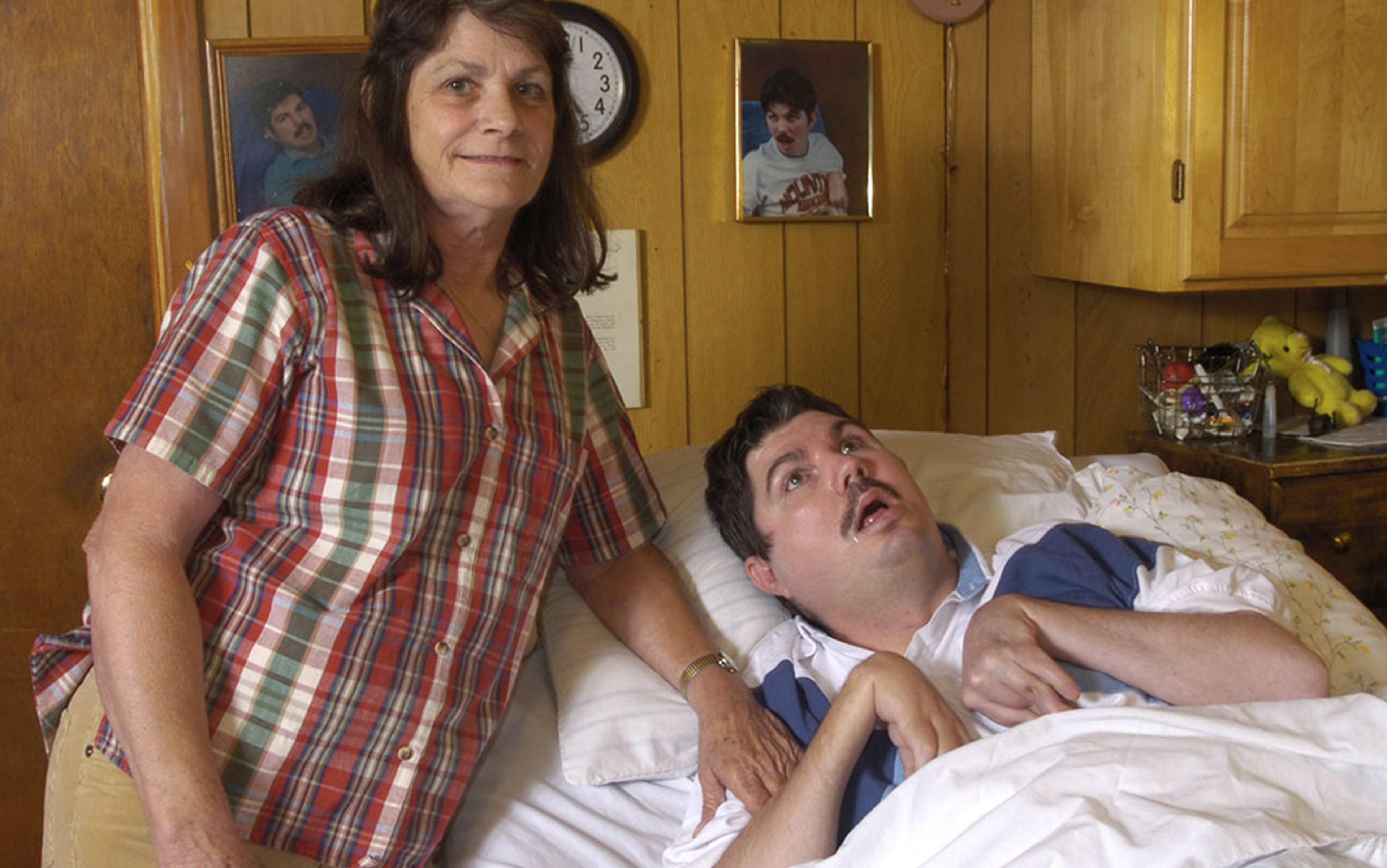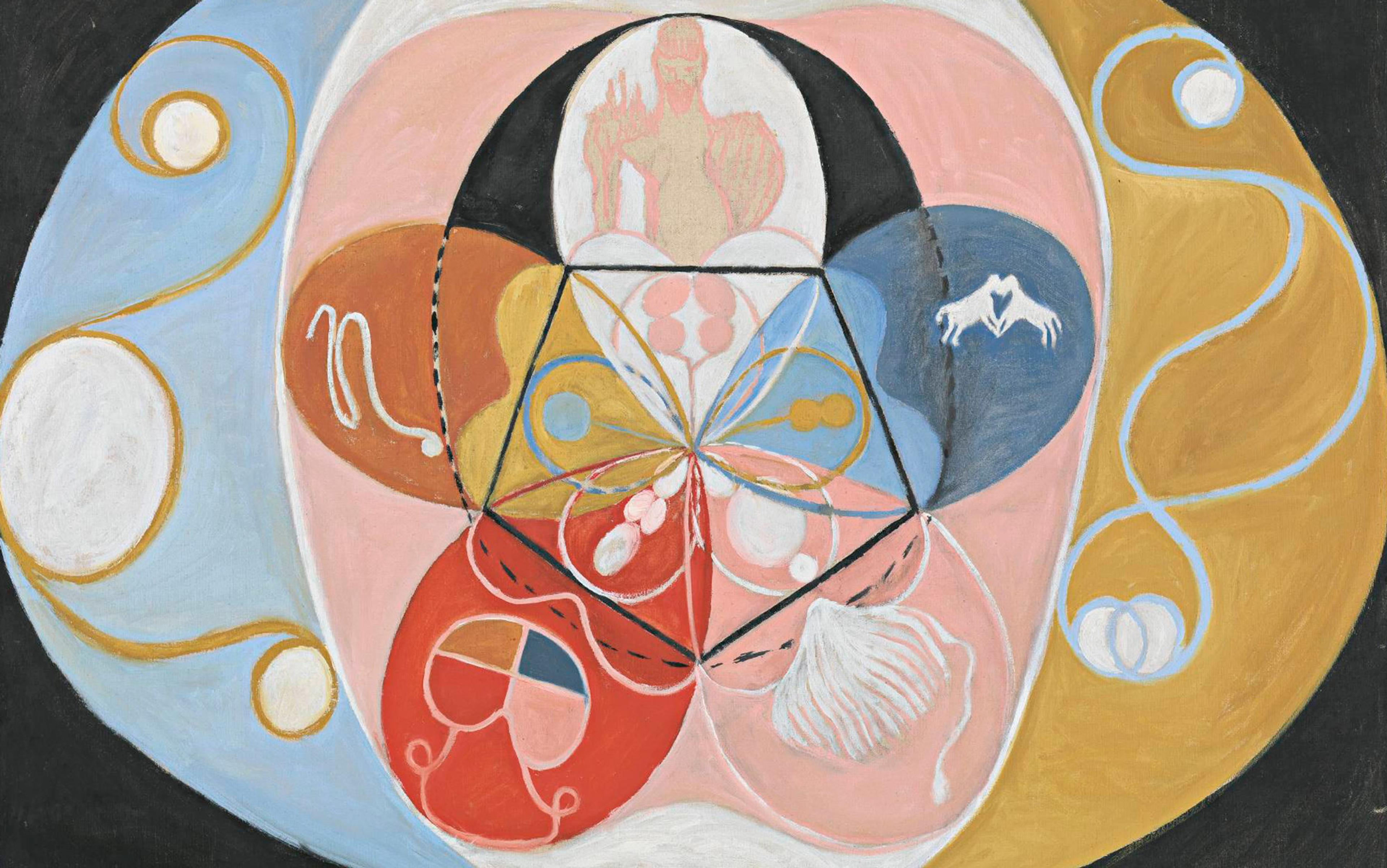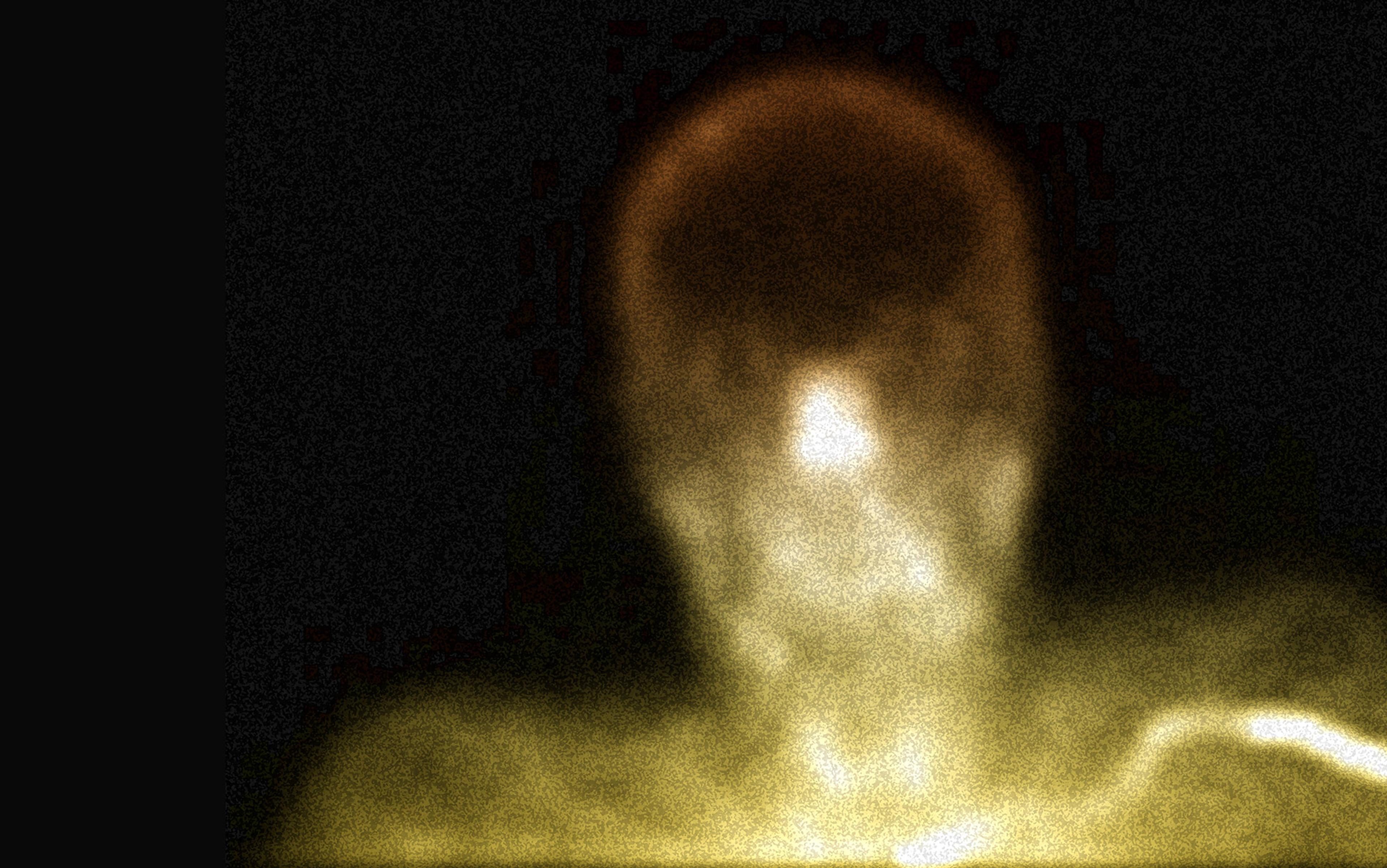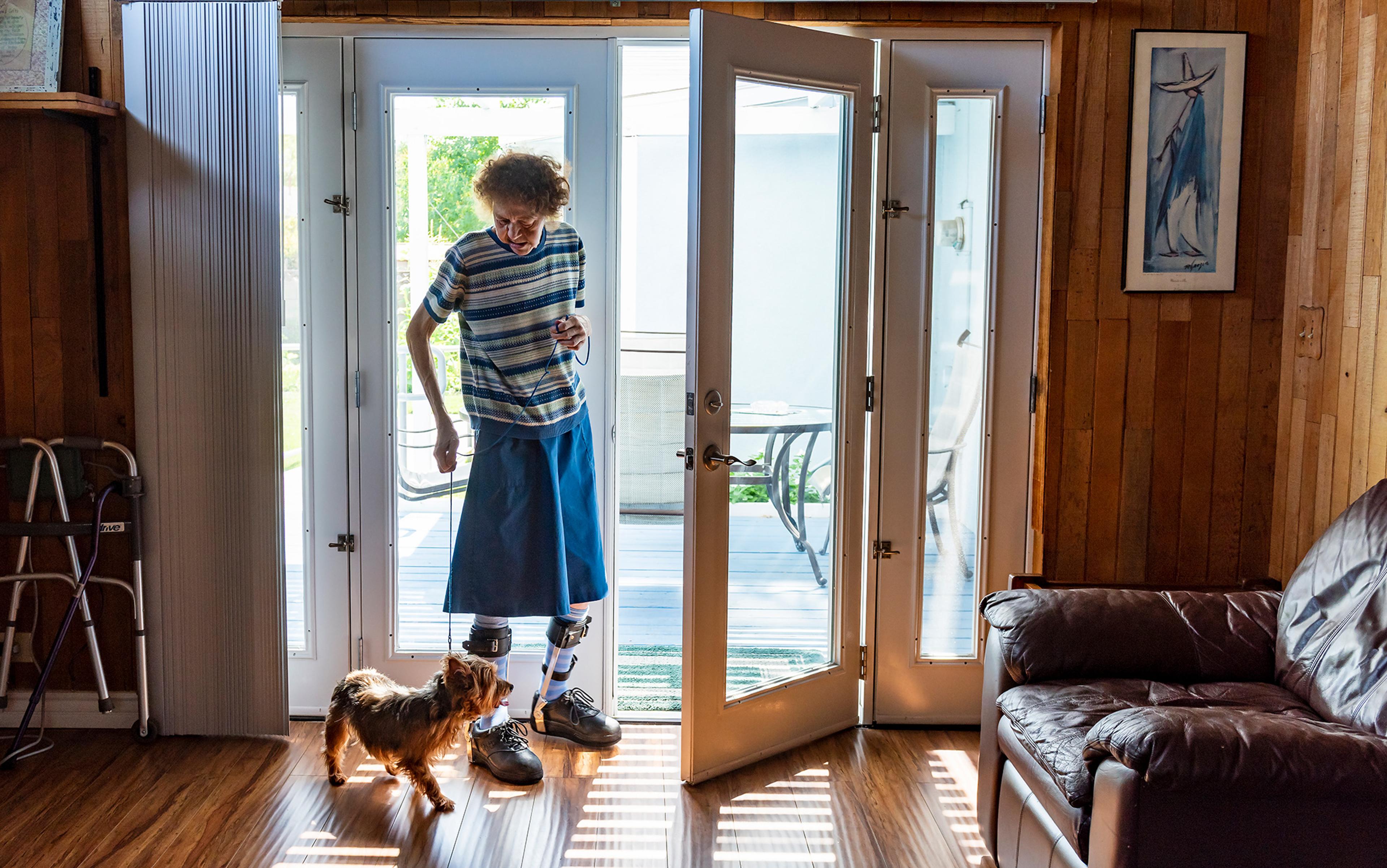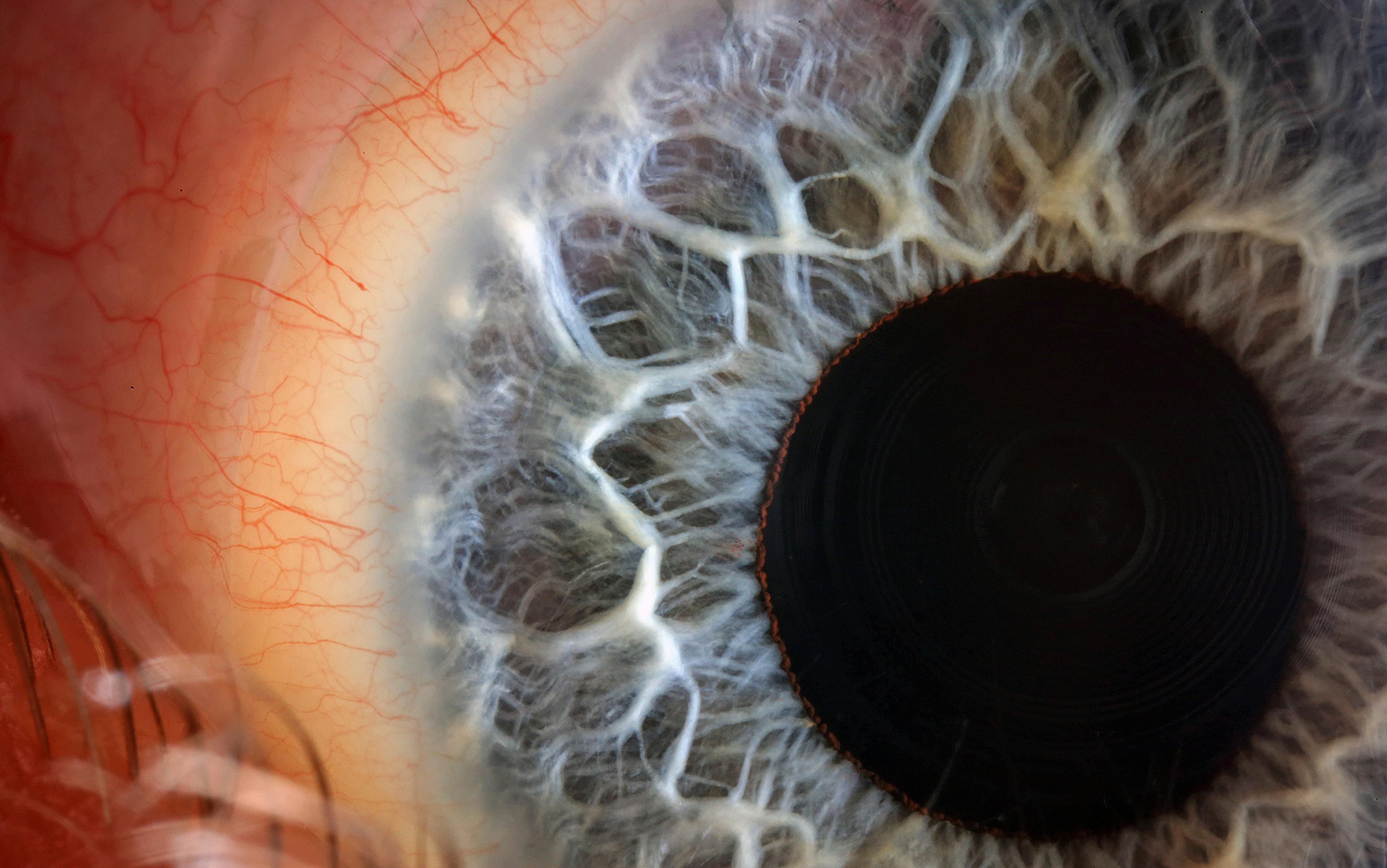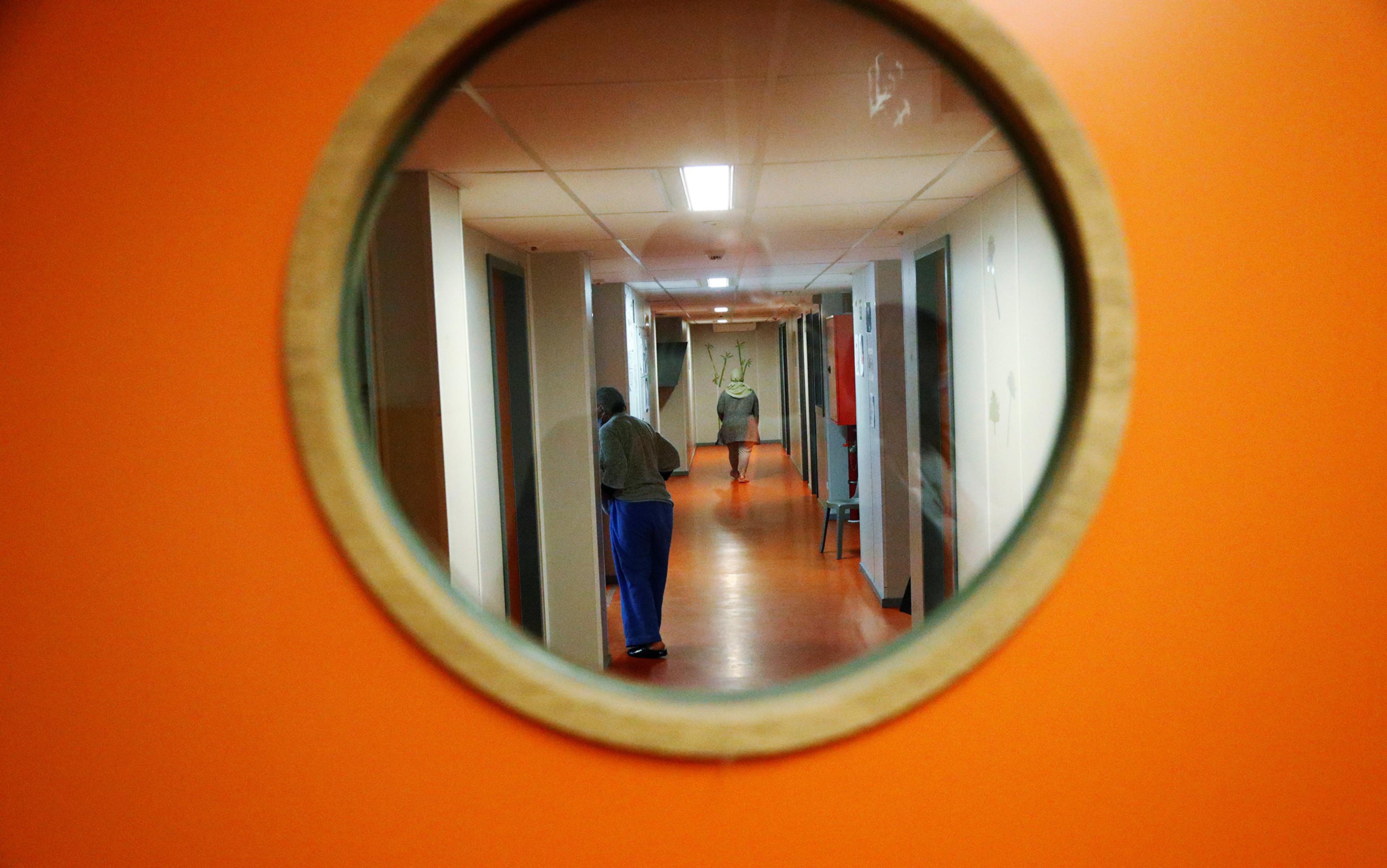A seasoned nurse came up to me after a lecture I’d given at Memorial Sloan-Kettering Cancer Center in New York. She seemed shaken by my talk and I was surprised. She worked on the palliative care service, and cared for dying patients and their families with a calm that was always reassuring. So it was strange to see her rattled. It was as if she had seen a ghost.
I had just finished giving a talk about severe brain injury, and told the story of Terry Wallis, a man in Arkansas who’d had a car accident in 1984. He survived but was left in a vegetative state, and his doctors and family thought he would be unconscious forever. Then in 2003 he began to speak. Tentatively at first, he said ‘Mom’ and then ‘Pepsi’. It was a stunning development almost two decades after he was injured. Terry’s words became the stuff of international headlines, baffling commentators who thought that recovery from the vegetative state was impossible.
Why? Because the vegetative state had gained an almost iconic status in the United States, in law and in medicine, following the landmark 1976 right-to-die case involving Karen Ann Quinlan. Quinlan had been left in the vegetative state after a presumptive drug overdose. Based on expert testimony, the New Jersey Supreme Court justified the removal of Quinlan’s ventilator because evidence indicated that her brain state was a place of unbreachable hopelessness.
This landmark decision, broadcast around the world, launched the right to die into US jurisprudence. That right was grounded, in part, on the presumption that people in the vegetative state don’t recover. And then in 2003, Terry spoke.
The world was taken by surprise, but I wasn’t. My colleagues and I had an alternative hypothesis. Terry had not been in the vegetative state all those years. More than likely, he was in the minimally conscious state (MCS), a new diagnostic category that came into the medical literature in 2002.
Terry’s case is less exceptional than it first appears. A 2009 study showed that 41 per cent of ‘vegetative’ patients with traumatic brain injury in nursing homes are in fact minimally conscious – they appear vegetative but retain awareness of their environment and sometimes even respond.
The trouble is that, most of the time, MCS patients are unable to demonstrate their awareness. One problem is that their level of arousal fluctuates. They cannot sustain attention and can drift in and out, making it difficult to engage with the outside world. And when they do interact, they are burdened by impairments in cognition.
This makes MCS more than a problem of communication, like the locked-in syndrome so poignantly captured by Jean-Dominique Bauby in The Diving Bell and the Butterfly (1997). Bauby, unlike the MCS patient, was cognitively intact. He had a communication disorder but was still able to write his memoir, blinking to create the words in a kind of personal Morse code.
MCS patients are burdened by problems with both cognition and communication, although some can be quite close cognitively to those with locked-in syndrome. All of this is on a spectrum, which is still evolving. And wherever MCS patients land on the spectrum, they generally look vegetative, though the resemblance is only skin-deep. Where vegetative patients are unconscious, minimally conscious patients are conscious, but do not always show that they are.
MCS patients are aware of self, others and their environment. They might track a family member with their eyes when they enter their room, grasp for a cup, even say a word, but they demonstrate these behaviours only episodically and intermittently. Given the challenges, even the rarest of behaviours makes a difference. Their inner consciousness can be signalled by the most subtle signs: sometimes by the flick of an eye, a glance when a loved one walks into the room or an aborted effort to say one’s name.
That might not seem like much, but those rare behavioural demonstrations of a conscious self are important. They point to a dramatically different neurobiology in the brains of MCS versus vegetative patients. While vegetative brains are dis-integrated, that is, unable to work as an integrated unit, MCS brains retain the potential for a network response. Unlike the vegetative brain where the network is destroyed, in MCS the grid upon which consciousness resides is retained. The challenge is that the power is not always on, but it could be. The potential is there for a reemergent self.
The nurses hadn’t read the textbooks and didn’t know that vegetative patients couldn’t have an emotional repertoire
And that possibility was realised when Terry spoke. I was witness to some of these events. As part of a research study approved by the Institutional Review Board of Weill Cornell Medical College, I reviewed his medical records, shared with me by his parents. Following interviews with his mother, I deemed it highly likely that Terry had moved into MCS several months after his injury. For most of those 19 years, he was minimally conscious, not vegetative, retaining the capacity for interacting with others that he demonstrated conclusively in 2003.
His family had thought he had been there for a while: he sometimes looked at them when they came into his room and responded to their voices. But the nursing home staff explained that was impossible. Terry’s parents asked that a neurologist reexamine their son and were told it was too expensive, and wouldn’t matter: he was in the vegetative state and that was that.
But his parents continued to wonder. His mother, Angilee, told me of one episode that really left an impression. It was in 1993, and one of Terry’s nurses called to say he was somehow not right. Now, vegetative patients are not right or wrong, they just are. But these nurses hadn’t read the textbooks and didn’t know that vegetative patients couldn’t possibly have an emotional repertoire. They were mothers and intuited that something was wrong and that Terry needed Angilee.
Angilee arrived to find Terry with eyes wide open, looking scared. What had happened? An elderly man with advanced dementia, with whom Terry shared a room, had become confused; he’d asphyxiated himself in his sheets, and died. Terry witnessed the event, but still mute and presumed to be vegetative, could not tell anyone of his pain or distress.
Only when he began to speak a decade later would it begin to make sense. At some level, Terry had likely been capable of appreciating what happened that night, but he was isolated inside himself, and 10 years ahead of medical science.
The palliative care nurse at Memorial Sloan-Kettering had listened intently to Terry’s story and told me one of her own. When she had been in high school, she had volunteered at a nursing home. She was assigned a young man who was in the vegetative state, and would tend to him each week. Over months of care, she thought that he was aware: he sometimes looked at her, but she wasn’t sure. It worried her, but she told no one; what did she know? She was a teenager doing community service. And besides, her patient was diagnosed as being in the vegetative state, just like Terry.
When she heard Terry’s story, she immediately thought of her patient decades ago. It now made sense and she was shaken by the parallels. As she suspected, her patient had been there, at least on some level. And with that epiphany, she was guilt-stricken. Perhaps, she should have said something, even if no one would have listened.
She tried to reassure herself, she had always been kind to him, but she still felt that she had let her charge down. If only she had known about MCS, it would have changed everything. But she did not know and could not know.
The nurse was a former colleague and I knew she was a caring clinician. Even as a teenager, her empathy was in full bloom, and so I tried to console her. She had been compassionate and it was a long time ago. How could she know? Despite my attempt at clinical absolution, she would always see his eyes looking at her, knowing now that they were once-seeing windows on a silent soul.
Her worry was laudable, though rare. In researching my book Rights Come to Mind: Brain Injury, Ethics, and the Struggle for Consciousness (2015), I spoke with more than 50 families who had brought their loved ones to the Consortium for the Advanced Study of Brain Injury (CASBI) at Weill Cornell Medical College and the Rockefeller University where I work in New York.
In tandem with neuroimaging and electrophysiological studies on how the injured brain recovers, led by my Cornell colleague, the neurologist Nicholas D Schiff, I sought to better understand how families have navigated the healthcare system, made ethical choices and provided care for their loved ones.
What I discovered is a story of marginalisation and neglect for some of society’s most vulnerable members. It is a scenario that cries out for systemic reform. The pattern repeats itself irrespective of race, class or place of residence. These patients are saved by brilliant medical interventions that weren’t available a couple of decades ago: the use of shunts that can decrease pressure on the injured brain, or removal of part of the skull to let the brain swell without suffering from the damage caused by compression; once the swelling subsides, the skull is reattached.
There might be important changes signalling improvement going on in a patient’s head before a limb is moved or a word is spoken
But after these medical heroics, many who have benefitted from these advances in acute care are dispatched to the world of chronic care, where families struggle for services. Patients are often discharged before they are medically stable and sent to facilities lacking staff capable of dealing with the consequences of severe brain injury.
Quality rehabilitation is in short supply at a few major centres, and in the US, those lucky enough to gain entry have their length of stay curtailed by reimbursement criteria that limit the amount and duration of care. Instead, patients are subjected to what is called ‘medical necessity’ or the improvement standard, where ongoing rehabilitative care ceases to be provided if improvement is not demonstrated in a timely fashion.
It’s a policy that makes no sense for brain injury because not all improvements are visible, or discernible by one’s behaviour. There might be important changes signalling improvement going on in a patient’s head before a limb is moved or a word is spoken. Think of the difference between thought and action and the distinction becomes clear. Recovery might be happening in the brain long before a patient can muster the energy, or level of function, to say that he is getting better. To state that we are going to pay only for that final, behavioural demonstration of recovery – the movement of a limb, or the uttering of a word – and not pay attention to what’s happening inside the patient’s head is to discount how recovery proceeds.
Terry’s case shows that brains recover by biological mechanisms, not insurance reimbursement criteria. He did it in his own time, a timeframe we don’t understand. So how could ‘utilisation reviewers’, as such bureaucrats are called, claim that a recovery is too late? As far as his biology is concerned, Terry was right on time. And his brain likely showed evidence of recovery long before he spoke.
Let me explain. In 2004 and 2005, Terry came to New York to be scanned using a high-resolution type of magnetic resonance imaging (MRI) called diffusion tensor imaging (DTI), which looks at the orientation of fibres in the brain based on anisotropy, or how water molecules in the body’s tissues line up. Using a colour-coded scheme, these images show different colours for the differing direction of water molecules. Imagine the points on a three-dimensional compass. Fibres with a side-to-side orientation are typically red. Those that move from front to back are green, while those that track up and down are blue. So labelled, one can trace the axons (or wires) that extend out from neurons, and begin to map the brain, in gorgeous post-modern cartography.
Using this method, my colleagues at Weill Cornell demonstrated that there was axonal sprouting, or new connections, in Terry’s brain long after his injury. The results, published in the Journal of Clinical Investigation, showed dynamic changes in his brain that were possibly the neurobiological basis of his first words in 19 years. It is likely these structural reconnections predated that recovery of speech and had something to do with his cognitive return.
Long before he spoke, Terry’s brain was demonstrating evidence of recovery that might have been hastened with the sort of rehabilitation that he had been denied. We know, for example, that learning and training can also induce axonal sprouting. Remarkably, this process is much like that which occurs in the maturing brain. As a child grows, the brain connects developing areas with axonal sprouting. It seems that the recovering brain uses this developmental process in the service of brain repair.
Given this association, it is quite likely that what was occurring in Terry’s brain might have been accelerated or augmented by a form of rehab that resembles re-education. Indeed, if the recovery process looks like neurodevelopment, why not treat the brain-injured patient more like a maturing student with a developing brain?
My radical idea, supported by our growing understanding of neurobiology, brain recovery and resilience, comes too late for Terry. He made his way to recovery on his own, after nearly two decades of a seemingly occult biological process in which his brain was changing, even though it looked as if his condition was static – but why did it have to take so long?
Terry’s story points to the injustice of current policy and views. The dissonance is illustrated by recent work using functional MRI, or fMRI, which tracks activities in the brain in almost real time by mapping increases in blood flow to areas that become active when used. Using these methods, researchers have identified a discordance between brain activity and outward behaviour that is scientifically important and ethically profound. We saw this retrospectively when Terry spoke. At that moment it was clear that what he had been able to demonstrate before those first words did not reflect what was happening in his brain.
There were people who were isolated and thought gone, who were in fact still there, conscious and aware
The question is, can we demonstrate this discordance, this potential for recovery before that recovery becomes obvious? With this kind of evidence, we could supplement that slow process with therapy to speed it up.
In 2005, Schiff and the neuroscientist Joy Hirsch (now at Yale) did just that. Their team showed that the brains of minimally conscious patients were activated when exposed to narratives read by family members. When the same narratives were played backwards, becoming gibberish, activation did not occur. The implication? The brains of patients who looked inert and who appeared unable to respond to language were in fact processing language.
When I was interviewed by The New York Times to comment on the study, I had an epiphany. As I spoke, the implications of the study became chilling and crystal-clear: there were people who were isolated and thought gone, who were in fact still there, conscious and aware, even if they had been so long ignored. That disturbing insight has motivated much of my work over the years. Indeed, it keeps me up at night, worrying about a class of people, in the shadows of their own cognition, whom society has forgotten, abandoned in nursing homes.
As more scientific data has rolled in, my worries have increased. For example, in 2006, neuroscientist Adrian Owen and colleagues at Cambridge University published an imaging study on a 23-year-old patient diagnosed as vegetative according to behavioural criteria. Investigators scanned her with fMRI while asking her to distinguish between words or imagine either playing tennis or walking through her house.
In contrast to the Schiff and Hirsch study, this one used an active paradigm to assess brain activity. That is, to complete the task, the patient had to process a command and do something in her mind’s eye. When she did this, the relevant area in the brain associated with the actual activity, be it walking, playing an athletic game, or distinguishing words, lit up. The study showed that someone who could not execute a physical activity or skill could still think about it. It was just one patient, but it was a game-changer.
This discordance between what was going on inside her head and what was visible on the outside suggested that a new category had to be created. If the vegetative state is one of wakeful unresponsiveness, involving only the lower autonomic areas of the brain (the brain stem), then a patient who was activating areas of the cerebral cortex could not be vegetative. But the diagnostic framework was still problematic because officially, the criteria for the vegetative state are behavioural, and not based on neuroimaging.
So what was the correct diagnosis for this patient?
In response to this discordance between the clinical exam and what was discerned on neuroimaging, Schiff and I suggested that we refer to this limbo as the ‘non-behavioural minimally conscious state’. This is a sub-type of MCS in which patients can demonstrate awareness and consciousness only in their heads and with the aid of neuroimaging, and not through behaviours. We needed to arrive fully in the era of brain scans before we could document their consciousness, and their pain.
Rank and file clinicians remain nihilistic about brain injury, and resources for ongoing care are wanting
A more elaborate version of the Owen study was published in the New England Journal of Medicine by Martin Monti and colleagues in 2010. There, the team utilised the same active stimulation paradigm developed by Owen to toggle between thoughts to provide a yes or no in a patient who could not otherwise communicate. Thinking of playing tennis meant ‘yes’, while thinking about walking around one’s house meant ‘no’. Through flares on a bran scan, different from one activity to the next, a patient once considered vegetative could communicate with the outside world. Because they could respond with their thoughts but not through actual speaking or movement, the phenomenon was described as ‘cognitive motor dissociation’ by Schiff in 2015: what is going on in the brain is not reflected by corresponding behaviour.
For some, there is a life of the mind hidden beyond a veil of behavioural inactivity, suggesting that more than a superficial assessment is needed for the so-called vegetative group as a whole. The possibility of cognitive motor dissociation creates a compelling need to get the diagnosis right, lest these people be mislabelled and forever exiled from the human community because they are thought to be permanently unconscious, when they are not.
Such neglect becomes all the more tragic because neuroscience is beginning to develop ways to restore communication and help patients who are trapped inside their heads by a disorder of consciousness to get outside themselves. For example, in a small percentage of misdiagnosed ‘vegetative’ patients, the sleeping pill Ambien (zolpidem) has been shown to activate networks and restore overt evidence of consciousness. Another agent, the flu drug Amantadine, has been shown in a large randomised clinical trial to accelerate the return of consciousness following severe brain injury. These are exciting pharmacological developments that are now being incorporated into rehabilitation.
Another promising approach, with which I was involved as a co-investigator, was the use of deep brain stimulation (DBS), using electrodes to stimulate the thalamus of a severely brain-injured man six years after a near-fatal brain injury. Prior to DBS, he was unable to communicate, save for an occasional eye blink. He could not eat by mouth, was dependent upon tube feedings, and had poor limb control. With DBS, he could say six- or seven-word sentences, recite the first 16 words of the American Pledge of Allegiance, and tell his mother that he loved her. For the first time since his injury, he could eat by mouth, free of artificial nutrition and hydration. He also had improved limb control.
While still a long way from being an established therapy, our work was the first proof of principle that DBS can promote a late recovery in the severely injured brain. And it did something more: We helped restore a degree of personal agency. Our patient could voice a preference, be placed back in his room when he wanted, and was returned from his long exile in a liminal state of consciousness.
Pretty remarkable stuff, but this promissory note will be possible only if these patients are properly identified and not tragically warehoused in custodial care. Despite the progress that has been made over the past couple of decades in the identification of a new brain state, and the advent of novel neuroimaging methods, drugs and devices, the status quo remains dire for this population. In the face of incontrovertible evidence that such patients can be helped, rank and file clinicians remain nihilistic about brain injury, and resources for ongoing care are wanting. The net outcome is that patients who might benefit from more intensive rehabilitative efforts generally wind up exiled in nursing homes. It is a paradox that begs for an explanation.
If we return to the origins of the right to die in the US, we might find an answer to this critical quandary. When the right to die was established in the Quinlan case in the 1970s, the court ruled that her parents could remove her ventilator and let her die because of an irreversible loss of her cognitive state. This right was broadened and sustained in other cases involving patients in the vegetative state: in 1990, the US Supreme Court found a right to withhold or withdraw life-sustaining therapy for Nancy Beth Cruzan in Missouri; and throughout the early 2000s, the nation relitigated the right to die of Terri Schiavo in Florida. While irreversibility was true in her case, and in patients who are permanently vegetative, this perception of futility has been over generalised to other patients with severe brain injury who were not permanently vegetative but instead minimally conscious.
There is an irony that, in establishing one set of rights, we have trampled on the rights of others
In fact, instead of revealing the truth about large numbers of other patients, these cases have polarised us on ideological grounds and have become grist for the ‘culture wars’. During the Schiavo debate, for instance, those on the right took a ‘pro-life’ point of view, falsely asserting that Schiavo was conscious and not in the vegetative state, in order to counter those supporting her surrogate’s decision to withdraw care. This diagnostic distortion was matched on the left by those who were worried about the advent of MCS, introduced in 2002 – three years before the Schiavo case grabbed national headlines. They were concerned that this new diagnosis might undermine the right to die by introducing the possibility that some patients thought to be vegetative were in fact conscious. Against these cultural forces, it became a zero-sum game, pitting the right to die against the right to care, a fight made all the more complicated because some minimally conscious appear vegetative when they are not.
There is an irony that, in establishing one set of rights, we have trampled on the rights of others. In establishing the right to die, a right that I wholly endorse as an extension of our liberty interest, we have marginalised conscious individuals and deprived them of their right to a self. They have been segregated from the medical mainstream, deprived of adequate rehabilitation, all with the consequence that we have kept them from being more fully reintegrated into civic community. By not adequately identifying consciousness when it exists and failing to foster it when it does, we have perpetuated a kind of neuronal segregation. By depriving these patients of proper care and rehabilitation, we are robbing them of their voice.
The remedy to this marginalisation will not be found merely in improving access to medical care or health insurance. Indeed, failing to move from narrow questions of insurance coverage to the rights of these individuals would be akin to trying to justify the Jim Crow laws of the segregationist American South. That was a charade of the doctrine of separate but equal, which was based on a deeply flawed 1896 Supreme Court ruling in Plessy v Ferguson that said segregation was legal so long as those who were segregated from each other had access to equal treatment. That reasoning was completely illogical in theory and a myth in practice. But it was the law until Brown v Board overturned Plessy v Ferguson and integrated the schools in 1954.
So too for patients with liminal states of consciousness, who can never be properly cared for if they remain segregated in chronic care facilities and nursing homes, neglected and marginalised. To integrate them into the mainstream, society needs to recognise that these are conscious individuals who have thoughts and feelings. They too have civil rights and are entitled to the full protection of the law like all other citizens.
Among these protections in the US is enforcement of the Americans with Disabilities Act (1990), which seems to be grossly violated where this patient group is concerned. By denying individuals with disorders of consciousness a careful diagnosis and access to rehabilitation, we are preventing their return to our shared community. Earlier generations called such systemic exclusion segregation, and it is not hyperbole to suggest its use here. After all, we are talking about conscious beings, vulnerable and wholly dependent upon the largess of others, shuffled off to chronic care never to be heard from again. With the emergence of an evolving neuroscience that has the capacity to give them voice, and their families hope, there is a compelling mandate to do more for these individuals who have, for too long, lived on the margins of society. Their plight should be the civil rights agenda of our generation.
